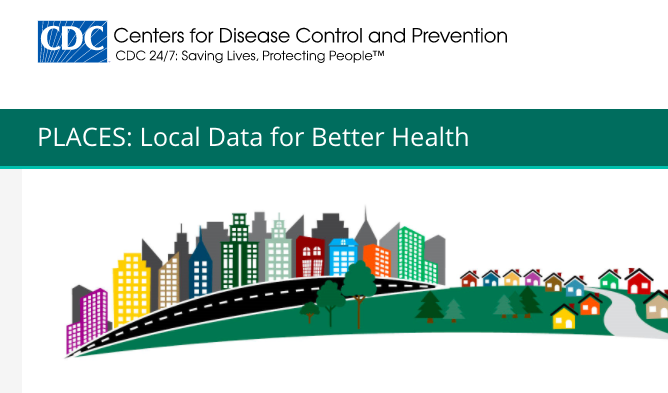An Introduction to the Burden of Disease Framework
What are data frameworks?
Dynamics driving health and well-being are complex. In the field of public health and more broadly among those working to advance equitable well-being, frameworks—a basic structure underlying a system, concept, or text—are a powerful tool that aid in understanding and sense-making. Frameworks provide conceptual infrastructure and help us understand the complex nature of health and well-being. “Framing” is a way of structuring or presenting a problem or an issue; it involves explaining, describing, and adding context.
A framework provides a holistic view and approach to community change work, and prompts users to consider relevant upstream factors they might not otherwise. Importantly, frameworks are not mutually exclusive—in fact, using multiple frameworks offers a way to explore an issue from different perspectives.
Frameworks can be applied to quantitative data to help us more-effectively use data to inform our work. Data frameworks are arranged into a simple series of “domains” (or categories) that categorize a set of indicators that measure community health and well-being. Learn more about data frameworks and how they can be leveraged to improve community health and well-being.
How Data Frameworks Can Help You Better-Understand Conditions and Take Action in Your Community
Story - Written
Brought to you by IP3
What is the Burden of Disease Framework?
The Burden of Disease framework sheds light on various health outcomes (e.g. cancers, cardiovascular diseases) that contribute to the overall burden of disease in a community. Burden of disease refers to death and loss of health due to diseases, injuries, and risk factors; domains in the framework reflect leading causes of morbidity, mortality, and disability and quality of life. The framework helps us consider the burden of different diseases on communities and explores traditional population health outcomes. Application of this framework exposes good and poor health outcomes in a given community and identifies priorities to invest in to decrease and prevent disease.
Burden of Disease Framework Domains
This framework is built from twelve domains, or categories used to organize indicators that measure community health and well-being:
Brain Health - Measures the relative magnitude of neurological disorders and conditions. Indicators include rates of Alzheimer’s disease, stroke, Parkinson’s disease, and more. Neurological disorders and conditions are associated with mental and physical disabilities, and can have grave physical, psychological, social, economic, and quality of life impacts on individuals and communities.
Cancers - Measures the relative magnitude of cancers. Indicators include cancer incidence and cancer deaths for all cancers and for specific cancer sites. Cancer is the second leading cause of death in the U.S., surpassed only by cardiovascular disease.
Cardiovascular Diseases - Measures the relative magnitude of cardiovascular disease or CVD (disorders of the heart and blood vessels), disease risk factors, and related conditions. Indicators include heart disease, high blood pressure, obesity, and more. CVD is the leading cause of death in the U.S.
Diabetes - Measures factors associated with diabetes and its management. Indicators include rates of diabetes and diabetes management, disease risk factors like obesity, and more. Diabetes is a risk factor for many other serious conditions, often gravely impacts quality of life, and costs the U.S. billions annually in medical costs and lost work and wages.
HIV/AIDS and STIs - Measures the relative magnitude of HIV/AIDS and other sexually transmitted infections (STIs). Indicators include HIV diagnoses, HIV/AIDS deaths, syphilis, chlamydia, gonorrhea incidence, and more. Certain STIs are relatively common in the U.S. and can be highly infectious and costly to treat; certain STIs like HIV and syphilis can have significant, long-term quality of life impacts.
Infectious Diseases - Measures the relative magnitude of infectious diseases. Indicators include rates of pneumonia, influenza, tuberculosis, diarrheal diseases, and more. As illustrated by the COVID-19 pandemic, infectious diseases can have huge impacts on most if not all aspects of daily life.
Injury and Violence - Measures factors associated with injury, violence, and accidents. Indicators include firearm deaths, interpersonal violence and self harm deaths, violent crime rates, motor vehicle and pedestrian crash deaths, and more. Exposure to injury and violence is associated with increased risk of poor mental health, and violence in a community or neighborhood limits business growth, strains education, justice, and medical systems, and slows community progress.
Kidney Diseases - Measures the relative magnitude of kidney diseases and related conditions. Indicators include rate of chronic kidney disease, renal failure deaths, and more. The kidneys are essential for many bodily processes and kidney diseases have the potential to damage nerves, muscles, and other tissues—without treatment, fluid buildup caused by kidney diseases can cause kidney failure, which is life threatening.
Maternal and Infant Health - Measures factors associated with maternal and infant health. Indicators include infant deaths, low birthweight, preterm births, tobacco use during pregnancy, and more. The health of mothers and babies is a strong indicator of overall community health and well-being, and there is unmet potential to address current gaps in this area in the U.S. Investments to improve maternal and child health—especially during the perinatal period—have potential to significantly improve long term health outcomes of the mother and child.
Mental and Behavioral Health - Measures factors associated with mental and behavioral health conditions. Indicators include experiences of mental health, alcohol use disorder and drug use disorder deaths, intentional self harm deaths, and more. Mental and behavioral health can greatly affect daily life, and mental health disorders are associated with serious chronic diseases. Unaddressed mental health problems can have a negative influence on homelessness, poverty, employment, safety, and the local economy.
Oral Health - Measures factors associated with oral health outcomes. Indicators include oral cancer deaths, tooth loss, and more. Oral health is a key indicator of overall health, well-being, and quality of life.
Respiratory Diseases - Measures the relative magnitude of respiratory diseases. Indicators include incidence, hospitalization and death rates for asthma, COPD, and other respiratory conditions. Chronic respiratory diseases affect millions in the U.S., and often those affected are at higher risk for other chronic diseases, and resulting hospitalization and/or death.
History of the Burden of Disease Framework
The framework was originally developed by the IP3 team in partnership with one of the largest health systems in the nation, and refined over time in working with hospitals and health care institutions as tax exempt hospitals were required to complete Community Health Needs Assessments (CHNA) as part of the Affordable Care Act of 2010. The framework is built around illnesses or ailments that affect our communities, with a focus on the leading causes of morbidity, mortality, and disability and quality of life in the U.S. Data used in the framework are usually accessed through publicly-available secondary data sources, like PLACES and County Health Rankings, and are often supplemented with custom local Electronic Medical Record data.
The organization of the domains in the Burden of Disease Framework directly correlates to the leading causes of death and disability in the United States, and the framework also considers how diseases and poor health conditions are prevented and/or treated. For example, the Cardiovascular Diseases domain includes data on obesity and smoking, as both are risk factors related to cardiovascular conditions like hypertension, stroke, and heart attack incidence.
County Health Rankings
Dataset
Brought to you by University of Wisconsin Population Health Institute
Burden of Disease Framework in the Field
The Burden of Disease Framework is used to understand how a community is faring when it comes to disease categories (aka framework domains), which are composed of a set of measures related showing more specific health indicators. For example, the rate of breast cancer screening and breast cancer incidence in a certain area are used to create a picture of the total burden of breast cancer, as well as cancer in general, in that area.
The health conditions and related health behaviors in the Burden of Disease Framework bear a burden on communities across the Nation, as well as the healthcare system. For example, heart disease has been the leading cause of death in the United States for over 100 years and costs the United States an estimated $219 billion every year in healthcare services, medications, and premature death. Health systems and local community organizations and public health departments can use the Burden of Disease Framework to target specific illnesses and conditions that most affect the communities they serve and to allocate and prioritize funding and other resources to decrease the burden of disease and advance population well-being.
Equity Considerations
When using the Burden of Disease Framework, it is important to take into account what the data can and cannot tell us about health disparities. While a community may see improvements at the population level, for example, when data are broken out by race and/or ethnicity, it’s likely that disparities have actually increased. A clear demonstration of this phenomenon can be seen in maternal and infant health outcomes. In 2021, the overall maternal mortality rate in the United States was 32.9 deaths per 100,000 live births, but when we break down the data by race/ethnicity, stark disparities become apparent. In the same year, the maternal mortality rate for Non-Hispanic Black and African Americans was 69.9 deaths per 100,000 live births, nearly three times the rate for white Americans. If we aim to use Burden of Disease data to drive community change and improve health in a truly equitable way, exploring data by population groups where available (and seeking more information through local data and qualitative data) to evaluate equity outcomes is essential.
Principles for Using Public Health Data To Drive Equity
Resource - Report
Brought to you by CDC Foundation
Case Study
Inland Empire Health Plan (IEHP) serves the Inland Empire region in Southern California and is a top 10 largest Medicaid health plan and the largest not-for-profit Medicare-Medicaid plan in the country—they have 1.6 million members, and over 7,000 providers in the network.
In 2022, the Inland Empire Health Plan set out to identify the top health and well-being needs of Inland Empire residents as part of their Community Health Needs Assessment. IEHP used IP3 ASSESS, a web-based data solution designed and built for changemakers using data to advance equitable well-being in communities around the Nation, to explore data organized by the Burden of Disease framework for their region, and compared regional data to data for the state of California and the Nation as a whole to understand how their community faired relative to others. Through examining data organized by the framework, the Inland Empire Community Health Assessment Stakeholder Committee identified three burden of disease areas for collective focus in the region: cardiovascular diseases and diabetes, maternal and infant health, and mental and behavioral health.
IEHP was able to identify the disease categories where investment needed to be prioritized. For example, though the data showed that the Inland Empire region generally had better maternal and infant health outcomes than the United States overall, compared to the state of California, the outcomes were worse in the region, demonstrating that the Inland Empire region could use more investment and resources to support maternal and child health outcomes. Through examining data organized by the Burden of Disease framework and gathering insight and input from local resident and stakeholders, changemakers in the Inland Empire region were able to target maternal and infant health measures specifically and move towards collective action to improve those outcomes and the health and well-being of mothers and young families.
Read more about how the Inland Empire Health Plan was able to leverage the Burden of Disease Framework to improve health and well-being in the communities they serve, and check out the data dashboard they created with IP3 ASSESS to examine and share data with the community and stakeholders.
Related Topics














 Original
Original






